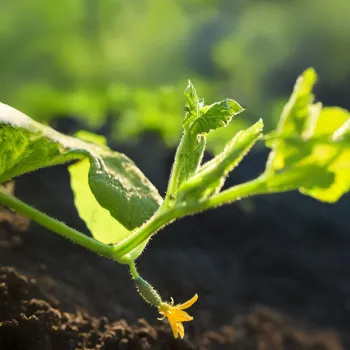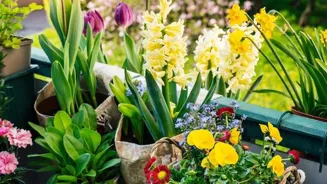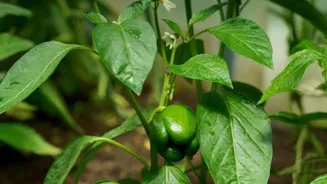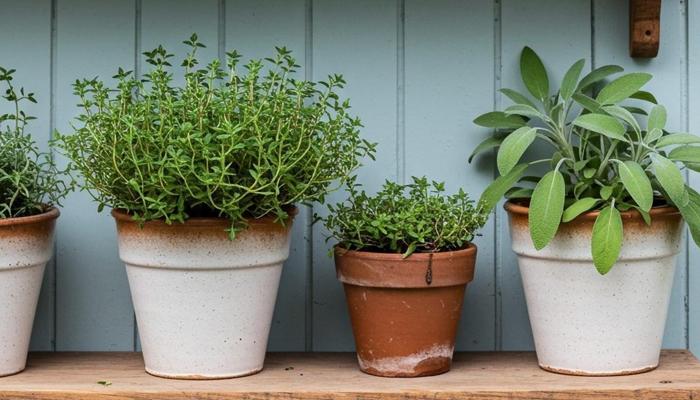Unleash your green thumb potential! Learn 9 tips to grow organic veggies. Dive in for a fruitful journey in gardening
Namaste, and welcome, fellow gardening enthusiasts! Are you tired of paying exorbitant
prices for vegetables that may or may not be truly organic? Do you dream of plucking juicy tomatoes straight from the vine or savoring the crispness of freshly grown lettuce?
Then it's time to ditch the store-bought produce and embark on a rewarding journey of growing your own organic vegetables. It's easier than you think, and the taste of homegrown goodness is simply unparalleled.
Plus, imagine the satisfaction of knowing exactly where your food comes from, free from harmful chemicals and pesticides. Growing your own organic vegetables is not just a hobby; it's a lifestyle choice that promotes health, sustainability, and a deeper connection with nature.
These following simple steps can guide you on this exciting journey.
Location, Location, Location: Choosing the Right Spot
Just like finding the perfect home, choosing the right location for your vegetable garden is crucial for success. Most vegetables need at least 6-8 hours of direct sunlight per day to thrive. Observe your garden area throughout the day to identify the sunniest spots. Also, consider the soil type.
Ideally, you need well-drained soil that is rich in organic matter. If your soil is heavy clay or overly sandy, don't despair! You can improve it by adding compost, organic matter, and other soil amendments. Easy access to water is another important factor.
You don't want to be lugging buckets of water across the yard every day, so make sure your garden is close to a water source or consider installing a drip irrigation system. And also most importantly, protect your plants from strong winds, especially during the early stages of growth.
A fence or hedgerow can provide a windbreak and protect your delicate seedlings. Choosing the correct place for sowing seeds is one of the most important part of cultivation.
Soil Preparation: Laying the Foundation for Growth
Healthy soil is the foundation of a thriving organic garden. Before planting, it's important to prepare the soil properly. Start by clearing the area of any weeds, rocks, or debris. Then, dig or till the soil to a depth of at least 12 inches.
This will loosen the soil and allow roots to penetrate easily. The next step is to enrich the soil with organic matter, such as compost, well-rotted manure, or leaf mold. Organic matter improves soil structure, drainage, and fertility. It also provides essential nutrients for your plants.
Consider getting your soil tested to determine its pH level. Most vegetables prefer a slightly acidic soil (pH 6.0-7.0). You can adjust the pH by adding lime to raise it or sulfur to lower it. After you have added organic matter and adjusted the pH, mix everything thoroughly into the soil.
Rake the surface smooth and you are ready to plant! By adding organic matter and compost, you create a thriving ecosystem for your plants.
Seed Starting vs. Transplants: Choosing the Right Approach
When it comes to planting vegetables, you have two options: starting from seeds or buying transplants. Starting from seeds is a more economical option, but it requires more time and effort. You'll need to start the seeds indoors or in a greenhouse a few weeks before the last expected frost.

Transplants, on the other hand, are young plants that have already been started for you. They are more expensive than seeds, but they give you a head start on the growing season. Also, some vegetables, like tomatoes, peppers, and eggplants, generally do better when started as transplants.
Others, like carrots, radishes, and beets, are best sown directly into the garden. Decide what you want to grow and then plan your seed and transplant purchases accordingly. Following the instructions on the seed packets carefully is vital for successful germination and growth.
And remember to harden off your transplants before planting them outdoors.
Watering Wisdom: Providing Essential Hydration
Water is essential for plant growth, but how much should you water your vegetables? Overwatering can lead to root rot and other problems, while underwatering can stunt growth and reduce yields. A general rule of thumb is to water deeply and infrequently, rather than lightly and frequently.
Water when the top inch of soil feels dry to the touch. Early morning is the best time to water, as it allows the foliage to dry before nightfall, reducing the risk of fungal diseases. Use a watering can or a soaker hose to deliver water directly to the roots, avoiding wetting the leaves.
Also, mulch around your plants to help retain moisture and suppress weeds. During dry periods, you may need to water more frequently. Observe your plants carefully and adjust watering as needed. By watering wisely, you'll ensure your vegetables have the hydration they need to thrive.
Remember to check the moisture of soil, before planning to water again.
Fertilizing Fantastically: Nourishing Your Plants Naturally
Organic gardening is all about feeding your plants naturally. Instead of using synthetic fertilizers, which can harm the environment, opt for organic alternatives that nourish the soil and promote healthy growth. Compost is your best friend!
It contains a wealth of nutrients and beneficial microorganisms. Add compost to your garden beds before planting and side-dress your plants with compost throughout the growing season. Other great organic fertilizers include well-rotted manure, bone meal, blood meal, and fish emulsion.
Apply fertilizers according to package instructions and avoid over-fertilizing, which can burn the roots of your plants. Consider doing a soil test to determine which nutrients your soil is lacking and then choose fertilizers that provide those nutrients.
Remember, healthy soil produces healthy plants! Moreover, these fertilizers improve the soil texture.
Pest and Disease Control: Protecting Your Precious Produce
Even in an organic garden, pests and diseases can sometimes be a problem. But don't reach for the harsh chemicals! There are many natural ways to control pests and diseases without harming the environment or your health. Companion planting can be a very effective strategy.
For instance, planting basil next to tomatoes can deter pests and improve the flavor of the tomatoes. Also, encourage beneficial insects, such as ladybugs and lacewings, which prey on harmful pests. You can attract these insects by planting flowers like marigolds and sunflowers.
Inspect your plants regularly for signs of pests or diseases and take action immediately. Handpick pests whenever possible. Use organic pesticides, such as neem oil or insecticidal soap, only as a last resort. Practicing good sanitation is also crucial.
Remove any diseased or infested plant material to prevent the spread of pests and diseases. A healthy garden is a less attractive target for pests and diseases.
Weeding Wisely: Keeping Your Garden Tidy
Weeds compete with your vegetables for water, nutrients, and sunlight. Keeping your garden weed-free is essential for maximizing yields. The best way to control weeds is to prevent them from germinating in the first place. Apply a thick layer of mulch around your plants to suppress weed growth.
You can use organic mulches such as straw, hay, wood chips, or shredded leaves. When weeds do appear, remove them promptly by hand or with a hoe. Be sure to pull out the entire root system to prevent them from growing back.
Weed your garden regularly, especially after rain, when the soil is soft and weeds are easy to pull. Don't let weeds get out of control! A little bit of weeding each day can save you a lot of time and effort in the long run.
Harvesting Happiness: Enjoying the Fruits (and Vegetables!) of Your Labor
There's nothing quite like the feeling of harvesting your own homegrown vegetables. Knowing that you nurtured these plants from seed to table is incredibly rewarding. Harvest vegetables when they are fully ripe and at their peak flavor.
Use a sharp knife or scissors to cut the vegetables from the plant, being careful not to damage the surrounding foliage. Harvest regularly to encourage continued production. Many vegetables, such as beans and cucumbers, will produce more if you keep harvesting them.
Enjoy your fresh vegetables right away, or store them properly to extend their shelf life. Share your harvest with friends, neighbors, and family. The joy of organic gardening is even greater when shared with others.
Continuous Learning: Growing and Improving Year After Year
Organic gardening is a constantly evolving process. Don't be afraid to experiment and try new things. Every season is a learning opportunity. Keep a gardening journal to record your successes and failures.
Note which varieties performed well, which pests were a problem, and which organic techniques were most effective. Read books, articles, and websites about organic gardening to expand your knowledge. Attend workshops and join local gardening clubs to connect with other gardeners and share ideas.
The more you learn, the better a gardener you will become. And remember, even experienced gardeners make mistakes. The key is to learn from your mistakes and keep growing! Remember to enjoy the process.
AI Generated Content. Glance/InMobi shall have no liability for the content










